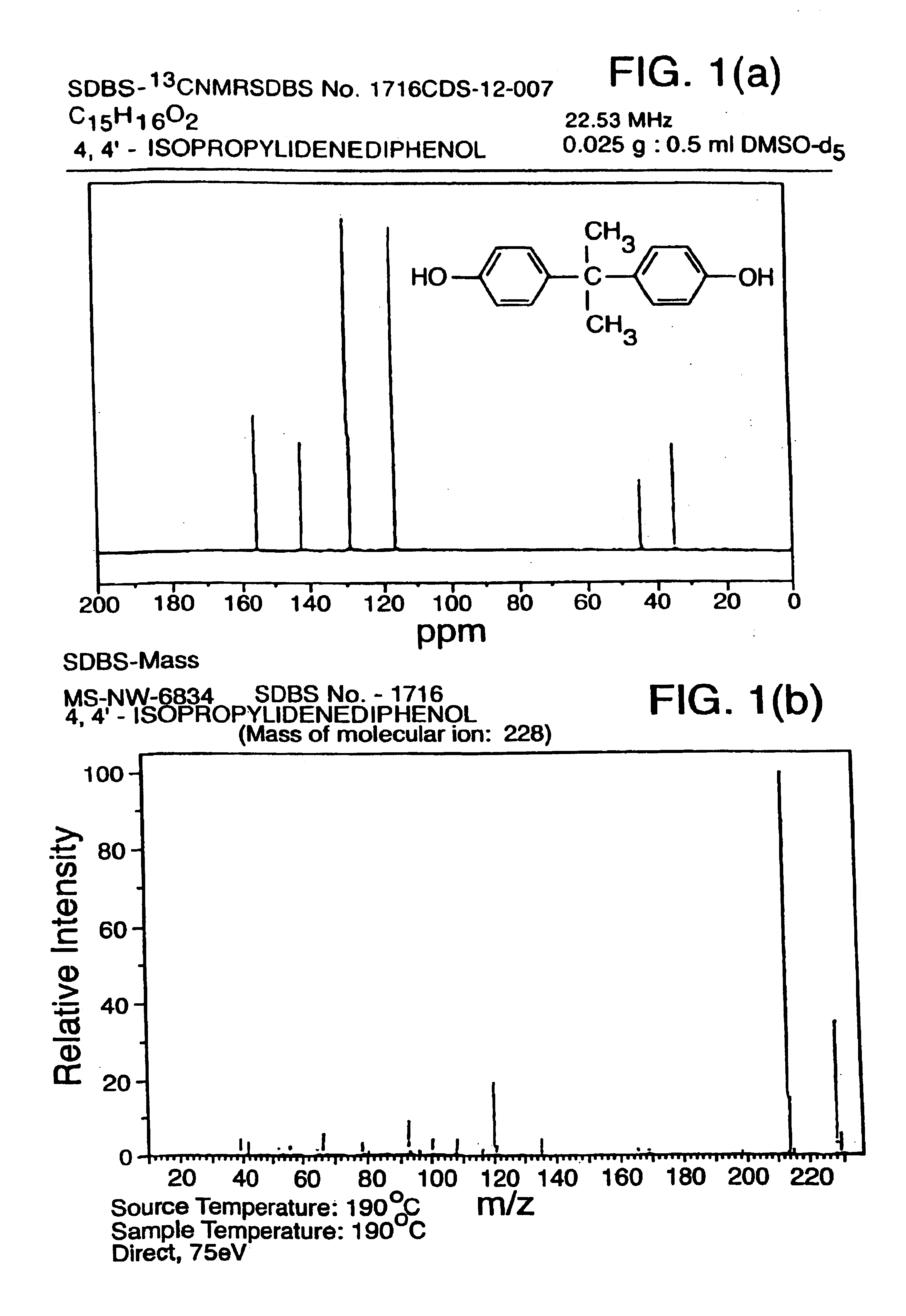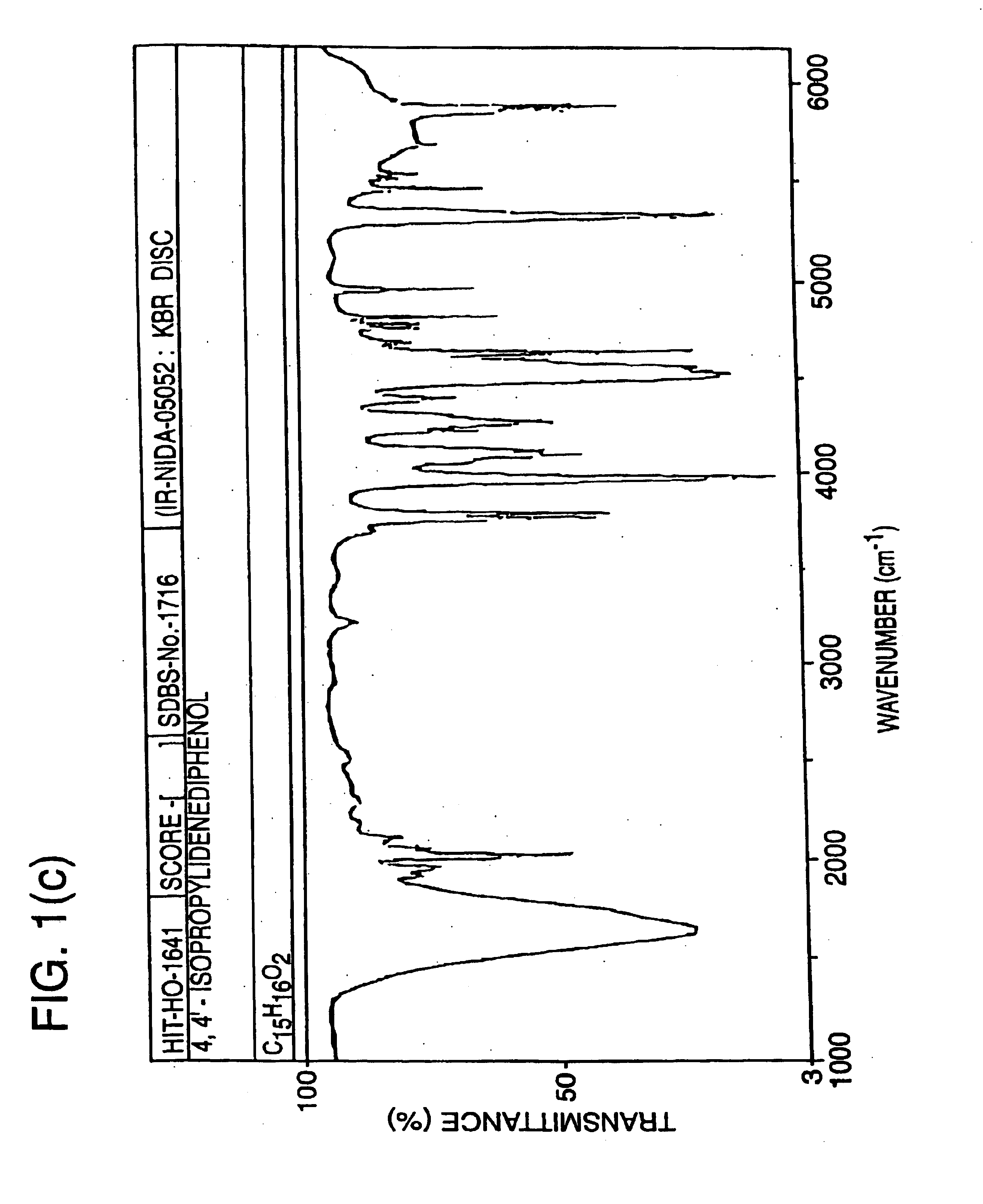Methods for predicting the biological, chemical, and physical properties of molecules from their spectral properties
a spectral property and biological property technology, applied in chemical methods analysis, color/spectral property measurement, instruments, etc., can solve the problems of only narrowing the range of compounds to be tested, arbitrary testing of known compounds to find those that show pharmaceutical activity, and wasting time and money. , to achieve the effect of convenient detection
- Summary
- Abstract
- Description
- Claims
- Application Information
AI Technical Summary
Benefits of technology
Problems solved by technology
Method used
Image
Examples
example 1
Use of 13C NMR and EI Mass Spectrometric Data to Produce a Predictive Model of Estrogen Receptor Binding Activity
[0107]The Food Quality Protection Act, passed in 1996, mandates that the Environmental Protection Agency (EPA) develop screening and testing procedures for endocrine disrupting chemicals (EDCs). An EDC is defined as “an exogenous agent that interferes with the production, release, transport, metabolism, binding, action, or elimination of natural hormones in the body responsible for the maintenance of homeostasis and the regulation of developmental processes.” Estrogenic compounds represent a significant subset of the EDCs to be tested. Many of these compounds can be screened by determining how strongly the compounds bind to estrogen receptors. Thus there is a need to develop inexpensive and rapid methods to screen thousands of potential compounds. SDAR according to the invention meets this need.
[0108]The 13C nuclear magnetic resonance (NMR) spectrum of a compound contains...
example 2
Expanded Trailing Set for Estrogen Receptor Binding SDAR
[0126]An expanded training set of 107 compounds of varying estrogen receptor binding affinities was utilized to create an SDAR model from 13C NMR spectral data and to create an SDAR model from a composite of 13C NMR spectral data and EI MS spectral data. The training set included weak estrogen receptor binders in addition to strong and medium estrogen receptor binders. Data for the training set was obtained from the following references: Blair et al., Toxicological Sciences, 54: 138-153, 2000; Hopert et al., Environmental Health Perspectives, 106: 581-586, 1998; Zava and Duwe, Nutr. Canc., 27: 31-40, 1997; and Kuiper et al., Endocrinology, 138: 863-870, 1997.
[0127]For this model, strong estrogen receptor binders were defined as having log(RBA)>−0.25 and weak estrogen receptor binders were defined as having log(RBA)13C NMR only (“Class predicted NMR”), and the predicted endpoint class based upon 13C NMR plus EI MS (“Class predic...
example 3
Use of 13C NMR, EI MS, and Infrared Spectral Data to Produce a Predictive Model of Biodegradability for Monocyclic Chlorobenzene Derivatives
[0135]Two recognized factors in the biodegradation of xenobiotic compounds in the environment are the physicochemical properties of the compounds themselves, and the enzymatic activities expressed by the microbial communities in the environment. The vast majority of microbial enzymatic reactions may be classified into one of four categories: 1) group transfer; 2) oxidation and reduction; 3) elimination, isomerization, and rearrangement; and 4) carbon-carbon bond cleavage. The extent to which xenobiotic chemicals can serve as substrates for these enzymatic reactions is determined to a large extent by their structure and particularly by the presence of bonds that are similar to those found in the natural substrates for the enzymes.
[0136]Infrared (IR) spectroscopic data may be included in an SDAR to provide a set of spectrally derived structure des...
PUM
| Property | Measurement | Unit |
|---|---|---|
| chemical shifts | aaaaa | aaaaa |
| chemical shifts | aaaaa | aaaaa |
| acquisition time | aaaaa | aaaaa |
Abstract
Description
Claims
Application Information
 Login to View More
Login to View More - R&D
- Intellectual Property
- Life Sciences
- Materials
- Tech Scout
- Unparalleled Data Quality
- Higher Quality Content
- 60% Fewer Hallucinations
Browse by: Latest US Patents, China's latest patents, Technical Efficacy Thesaurus, Application Domain, Technology Topic, Popular Technical Reports.
© 2025 PatSnap. All rights reserved.Legal|Privacy policy|Modern Slavery Act Transparency Statement|Sitemap|About US| Contact US: help@patsnap.com



